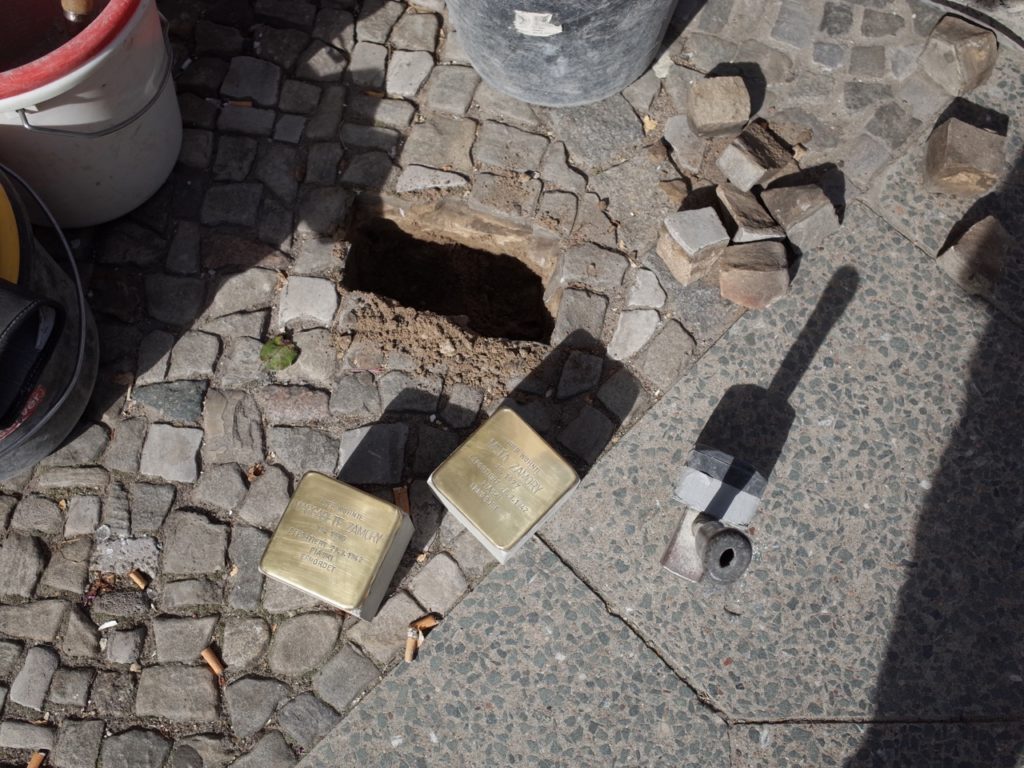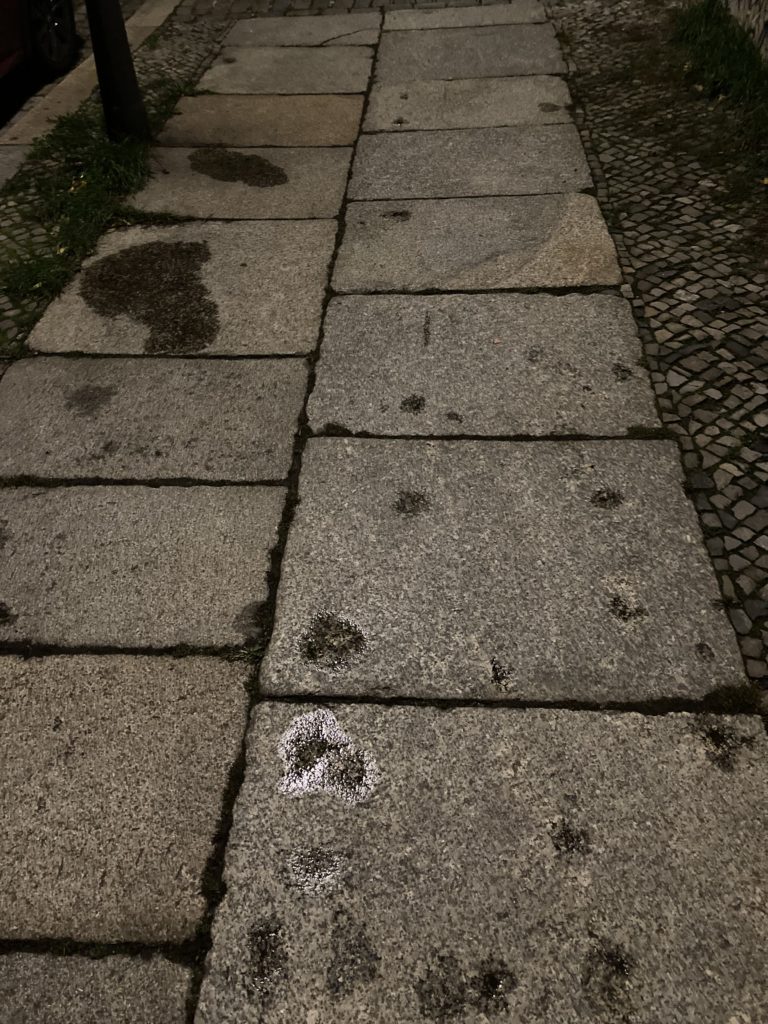The Story of Berlin’s Sidewalks
Below Berlin’s facades––an architectural pastiche––there is a surprisingly consistent urban feature: the design of the sidewalks. Today, I pay more attention than usual because the autumn leaves draw my eyes down to the mosaics of small stones. Each rock, five-by-five centimetres, is fitted tight with others. The fallen foliage is a colourful patchwork cast over.
All over Berlin, you find ribbons of these grey paving stones. They separate the bike paths from the road or the walkways. From Bernburg, a mining town in Sachsen-Anhalt, they are made of limestone. Sometimes, I see road pavers in Berlin fixing the sidewalks, hammers in hand. They tap the stones into a sand bed, cast more sand around them, before moving to the next. Sometimes, different coloured blocks make designs.
The Stolpersteine, invented in Berlin, are easy to install in the capital. All you need to do is remove a few of the Bernburger Rogenkalk and fit the memorial between.
The small paving stones border muscular granite blocks. In Berlin, these are known as Schweinebäuche, or pig-bellies.
They are unique to Berlin, and we have the restaurant Lutter & Wegner on Gendarmenmarkt to thank. In 1825, they wanted a solid sidewalk in front of their establishment, so they built one privately. Friedrich Wilhelm III was so impressed that he had their design extended to the rest of his capital.

The pig-bellies have a set width, but their length varies, with the longest in Hardenbergstraße in Charlottenburg. Why they are called this is not immediately obvious. Their hidden undersides are rounded, like the hanging belly of the animal, so they don’t sink in the sand.
It is autumn. The city is growing darker. Days are shortening. But if you look low, like the light does these afternoons, you will see something subtle. Not just the fallen leaves, but the granite, 600 million years old, that contains impurities such as quartz or mica or feldspar. When it rains, the colours ripple.






